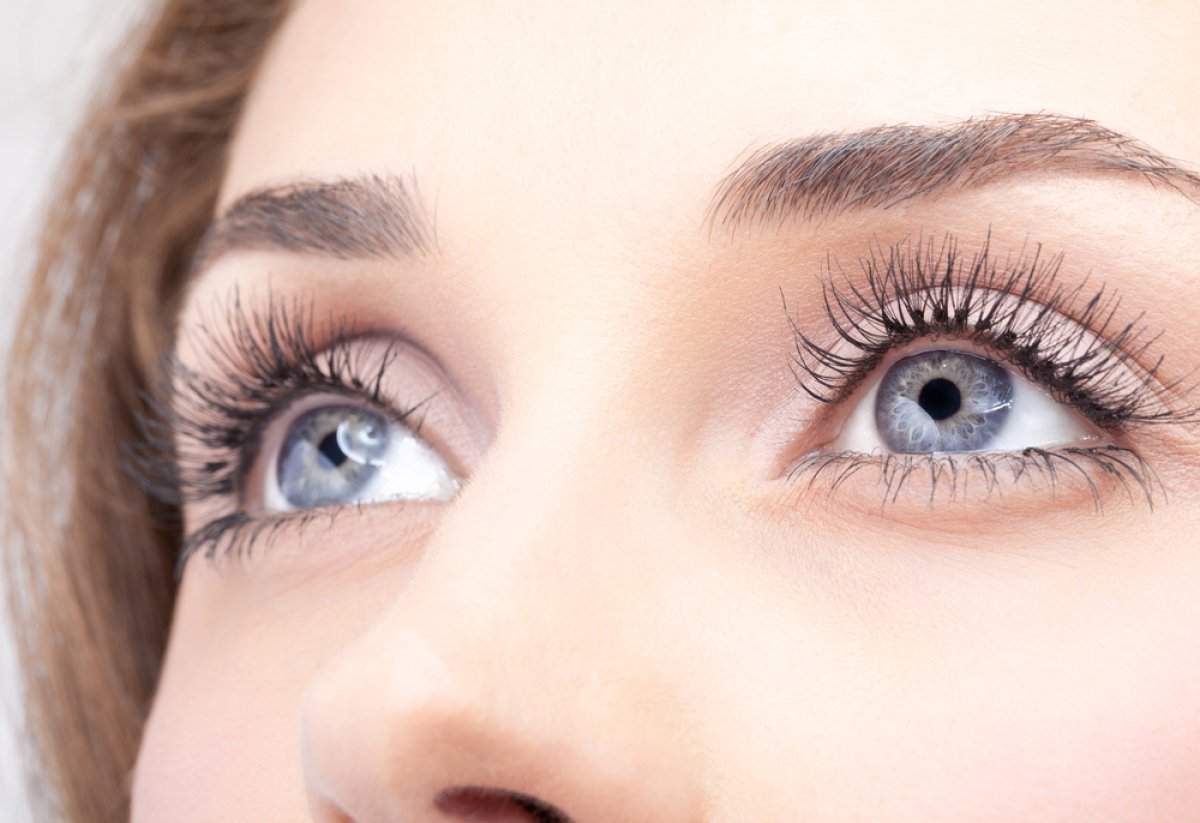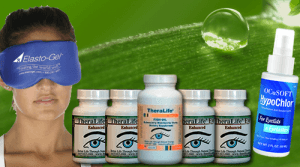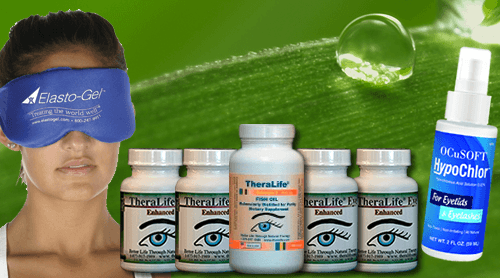Blepharitis, often associated with autoimmune conditions such as rheumatoid arthritis and rosacea, presents challenges in management due to systemic inflammation affecting the eyelids. Theralife.com offers a range of products that provide significant benefits to those suffering from blepharitis and related conditions. Their products are designed to alleviate symptoms like redness, swelling, and irritation while addressing underlying factors that exacerbate flare-ups.
Theralife’s natural treatment solutions focus on reducing inflammation and enhancing eye health through the use of supplements that support the body’s immune response. Their approach integrates lifestyle modifications, hygiene practices, and specific dietary recommendations to manage and prevent flare-ups effectively. Additionally, Theralife provides educational resources on environmental factors and genetic predispositions that influence the severity of blepharitis, offering insights into comprehensive management strategies.
Customers benefit from Theralife’s targeted therapies that not only relieve symptoms but also improve overall eye health. By exploring the connections between autoimmune conditions and blepharitis, Theralife empowers individuals with the knowledge and tools necessary for effective management, contributing to improved quality of life.
Best Blepharitis Treatment From TheraLife
Key Takeaways
- Blepharitis is linked to autoimmune diseases like rheumatoid arthritis, lupus, and Sjögren’s syndrome, which can exacerbate eyelid inflammation.
- Rheumatoid arthritis contributes significantly to ocular inflammation, causing dryness and discomfort, and effective management may reduce symptoms.
- Rosacea affects ocular health by impacting eyelids, leading to blepharitis symptoms like redness and irritation.
- Genetic predispositions and environmental triggers increase susceptibility to autoimmune diseases associated with blepharitis.
- Treatment for autoimmune-related blepharitis includes topical medications, lifestyle changes, and integrative therapies to manage inflammation and discomfort.
Understanding Blepharitis and Its Symptoms
Blepharitis, an inflammation of the eyelid margins, can cause discomfort and persistent irritation. Recognizing symptoms early is imperative for effective management. You might notice redness, swelling, or a gritty sensation in your eyes. Crusty eyelids and eyelashes are common, especially upon waking. Symptom recognition is essential, as untreated blepharitis can lead to more severe conditions, including damage to the cornea. Patient education plays an important role in managing it. Understanding the significance of eyelid hygiene is key. Regular cleaning of the eyelid margins with warm compresses helps remove debris and reduce inflammation. You’re encouraged to consult a healthcare professional for tailored treatment strategies. Knowledge empowers you to prevent complications and maintain ocular health effectively. Self-care measures, such as using warm compresses, can be an effective part of managing its symptoms at home.
The Connection Between Autoimmune Diseases and Blepharitis
Emerging research suggests a possible link between autoimmune diseases and blepharitis, highlighting the need for a deeper understanding of their connection. Autoimmune diseases can act as triggers, leading your body’s immune system to mistakenly attack its own cells, causing persistent inflammation. This inflammation response can manifest in various parts of the body, including the eyelids, where it occurs. Conditions such as lupus, Sjögren’s syndrome, and rosacea have been observed in conjunction with it, suggesting a shared inflammatory pathway. These autoimmune triggers may provoke an overactive immune response, aggravating eyelid inflammation and contributing to the development of it. Autoimmune diseases involve self-attack on healthy tissues, with over 80 types existing that commonly affect the eyes, lungs, thyroid, and salivary glands. Understanding this connection is essential for developing targeted treatments that address both the underlying autoimmune condition and the resulting ocular symptoms.
Rheumatoid Arthritis: A Key Player in Ocular Inflammation
In exploring the intricate relationship between autoimmune diseases and ocular conditions, rheumatoid arthritis emerges as a significant contributor to ocular inflammation.
When you have rheumatoid arthritis, your immune system mistakenly attacks your own body’s tissues, affecting not only your joints but also your eyes. This can lead to various ocular symptoms, such as dryness, redness, and discomfort.
The condition may also exacerbate blepharitis, an inflammation of the eyelids, which is often associated with autoimmune disorders.
Managing your rheumatoid arthritis effectively can help reduce these ocular symptoms. Regular check-ups with your rheumatologist and ophthalmologist are essential in monitoring and addressing any eye-related issues.
In particular, keratoconjunctivitis sicca, a common eye symptom in RA patients, affects 15-25% of those with the condition, leading to itching and light sensitivity.
Unveiling the Link Between Rosacea and Blepharitis
While many people recognize rosacea as a skin condition affecting the face, it’s also linked to ocular issues, particularly blepharitis. This connection arises due to inflammation that can impact your eyelids. Understanding rosacea triggers is essential for managing both skin and eye symptoms. Here’s what you need to know:
- Triggers: Common rosacea triggers include sun exposure, spicy foods, and stress. Identifying your specific triggers can greatly reduce flare-ups.
- Symptoms: Look for redness, irritation, and crusting around the eyelid margins. These signs often accompany facial rosacea.
- Diagnosis: A healthcare professional can assess symptoms to confirm the presence of ocular rosacea.
- Treatment options: Treatments may include eyelid hygiene routines, antibiotics, or eye drops to manage inflammation and discomfort.
Incorporating a low histamine diet is recommended to help manage inflammation and reduce flare-ups associated with rosacea.
Addressing these aspects can help you manage the link between rosacea and blepharitis effectively.
Exploring Other Autoimmune Conditions Affecting the Eyes
Understanding the connection between rosacea and blepharitis highlights the broader impact of autoimmune diseases on eye health. Various ocular autoimmune conditions manifest through inflammatory responses, affecting vision and comfort. Sjögren’s syndrome, for instance, often causes dry eyes due to reduced tear production. Similarly, lupus can lead to inflammation in the eye’s blood vessels, potentially causing pain and vision changes. Sjögren’s syndrome can also lead to keratoconjunctivitis sicca, a condition marked by severe dryness and irritation in the eyes.
Here’s a quick look at how these conditions can affect your eyes:
| Condition | Symptoms | Impact on Eyes |
|---|---|---|
| Sjögren’s syndrome | Dryness, irritation | Reduced tear production |
| Lupus | Pain, vision changes | Inflammation |
| Rheumatoid arthritis | Redness, discomfort | Episcleritis |
These autoimmune conditions require careful management to mitigate their effects on your eye health. Consult an eye specialist to explore treatment options.
The Role of Genetics and Environmental Factors
When examining the intersection of genetics and environmental factors in it, you should consider how genetic predispositions can increase susceptibility to autoimmune diseases. Environmental triggers, such as pollutants or lifestyle choices, may exacerbate these conditions by activating or intensifying immune responses. Certain genes have been linked to both primary Sjogren’s syndrome and lupus, indicating a genetic predisposition that plays a role in disease development. Understanding these interactions can help identify those at higher risk and guide strategies for prevention and management.
Genetic Predisposition Factors
Genetic predisposition plays a significant role in the development of blepharitis-related autoimmune diseases, although environmental factors also contribute. Understanding these genetic factors can help identify individuals at higher risk. Here’s what you should know:
- Genetic Markers: Specific genetic markers have been associated with increased susceptibility to autoimmune diseases linked to it, providing insight into disease mechanisms.
- Familial Prevalence: Studies show familial prevalence, meaning if a close family member has an autoimmune condition, your likelihood of developing blepharitis-related issues may be higher.
- Heredity Patterns: Certain hereditary patterns suggest a genetic link, underscoring the importance of family medical history in predicting disease risk.
- Research Developments: Ongoing genetic research continues to uncover new genetic markers, aiding in early detection and personalized treatment strategies for those with a genetic predisposition.
- Meibomian Gland Dysfunction (MGD), often associated with this, has been found to have environmental factors such as lifestyle choices that can exacerbate symptoms, further highlighting the complex interaction between genetics and the environment.
Environmental Triggers Impact
While genetics play a role in the development of blepharitis-related autoimmune diseases, environmental triggers greatly impact their onset and progression.
You may find that exposure to environmental pollutants, such as smoke, dust, and chemicals, can exacerbate symptoms or even trigger the initial onset of these conditions. These pollutants cause inflammation and irritation, which can worsen.
Additionally, climate change is altering weather patterns, increasing the prevalence and distribution of allergens and pollutants. This shift can lead to more frequent flare-ups and a wider range of affected individuals.
It’s essential to recognize that while genetic predisposition contributes to disease risks, environmental factors like pollution and changing climates markedly influence the manifestation and severity of autoimmune diseases linked to blepharitis.
Incorporating anti-inflammatory foods into the diet can help manage symptoms by reducing inflammation and promoting overall health.
Best Blepharitis Treatment From TheraLife
Treatment Approaches for Blepharitis in Autoimmune Patients
When managing blepharitis in patients with autoimmune diseases, you should consider a thorough approach that includes topical treatments and medications tailored to reduce inflammation and symptoms. Dietary and lifestyle modifications can also play a role in alleviating blepharitis by promoting overall health and reducing triggers. Additionally, integrative and alternative therapies may offer complementary benefits and enhance traditional treatment outcomes. Warm compress therapy, as supported by studies, can increase tear film stability and reduce inflammation, making it a valuable component of a comprehensive treatment plan.
Topical Treatments and Medications
For those managing blepharitis in the context of autoimmune diseases, understanding the available topical treatments and medications is essential. Here’s a straightforward guide to help you navigate your options:
- Topical Antibiotics: These are often prescribed to control bacterial growth on your eyelids. They can help reduce inflammation and improve symptoms.
- Corticosteroid Ointments: These prescription treatments can effectively reduce inflammation and swelling associated with blepharitis. However, use them under your doctor’s supervision to avoid potential side effects.
- Topical Cyclosporine: This medication can relieve inflammation by suppressing the immune response, especially useful for autoimmune-related blepharitis.
- Artificial Tears and Lubricants: These over-the-counter solutions can ease discomfort by keeping your eyes moist, which is vital for managing blepharitis symptoms.
A dedicated eyelid cleanser like Avenova is crucial for managing blepharitis effectively, especially in cases where maintaining hygiene is essential to control inflammation and infection.
Consult your healthcare provider for personalized advice.
Dietary and Lifestyle Modifications
Although managing blepharitis in the context of autoimmune diseases can be challenging, integrating specific dietary and lifestyle modifications can greatly improve your symptoms.
Consuming anti-inflammatory foods—like fatty fish, leafy greens, and nuts—can help reduce inflammation and support overall eye health. Omega-3 fatty acids, found in fish and flaxseeds, are particularly beneficial in easing blepharitis symptoms.
In addition to dietary changes, effective stress management plays an essential role in managing autoimmune-related blepharitis. Stress can exacerbate symptoms, so incorporating practices such as mindfulness, yoga, or regular physical activity can be helpful.
These lifestyle adjustments can lower stress levels and potentially reduce flare-ups. By adopting these strategies, you can actively participate in your treatment plan and enhance your quality of life.
Integrative and Alternative Therapies
Exploring integrative and alternative therapies for managing blepharitis in autoimmune patients can provide complementary options to traditional treatments.
By incorporating these approaches, you might find relief from symptoms. Consider these options:
- Herbal remedies: Certain herbs like chamomile and tea tree oil have anti-inflammatory properties that may soothe eyelid irritation.
- Acupuncture benefits: This ancient practice can improve circulation and reduce inflammation, potentially alleviating blepharitis symptoms.
- Warm compresses and eyelid scrubs: Regularly applying warm compresses and using gentle eyelid scrubs can help clear blocked oil glands and reduce discomfort.
- Omega-3 fatty acids: Consuming these supplements may support eye health by reducing inflammation and improving tear production.
Always consult with a healthcare provider before starting any new therapy.
Future Research Directions and Innovations in Care
Emerging research on blepharitis, especially its connection to autoimmune diseases, underscores the need for innovative care strategies.
As you explore future technologies, you’ll find promising avenues like advanced imaging techniques to better diagnose and monitor blepharitis. These technologies could lead to more precise treatment plans tailored to individual needs.
With regard to innovative therapies, researchers are working on novel anti-inflammatory medications targeting the underlying autoimmune mechanisms. Additionally, the potential of biologics and personalized medicine is being explored, aiming to deliver more effective and targeted interventions.
You’ll see a growing emphasis on interdisciplinary collaboration, integrating ophthalmology, rheumatology, and dermatology, to enhance patient outcomes. This holistic approach promises to transform how blepharitis and associated autoimmune conditions are managed.
Best Blepharitis Treatment From TheraLife
Frequently Asked Questions
Can Dietary Changes Help Manage Blepharitis Symptoms?
Dietary changes can indeed help manage blepharitis symptoms. By incorporating anti-inflammatory foods like leafy greens, fatty fish, and nuts, you may reduce inflammation and irritation.
Additionally, dietary supplements such as omega-3 fatty acids can support eye health. It’s important to consult with a healthcare professional to tailor your diet effectively.
Balancing your nutrient intake promotes overall well-being and may alleviate the persistent symptoms of blepharitis.
Are There Any Preventive Measures for Blepharitis in Autoimmune Patients?
Picture yourself in the Roaring Twenties, facing blepharitis with style.
Preventive measures for you include maintaining excellent hygiene practices, like cleaning your eyelids regularly to reduce inflammation.
Incorporating omega supplements into your diet can help support eye health, as they may reduce inflammation associated with autoimmune diseases.
How Does Stress Contribute to Blepharitis Flare-Ups?
You’re wondering how stress contributes to blepharitis flare-ups.
Stress can weaken your immune system, making you more prone to inflammation in your eyelids. Emotional triggers can exacerbate symptoms, causing discomfort.
Effective stress management is essential; techniques like mindfulness, exercise, and relaxation can help reduce these flare-ups.
Can Blepharitis Occur Without an Autoimmune Disease?
Yes, blepharitis can occur without an autoimmune disease.
The causes of blepharitis often include bacterial infections, dandruff, or oil gland dysfunction. You might experience symptoms of blepharitis such as red, swollen eyelids, itching, or crusting.
It’s essential to understand that while autoimmune conditions can be linked, they’re not a prerequisite.
Maintaining good eyelid hygiene and addressing underlying conditions can help manage this common eyelid inflammation effectively.
Is Blepharitis Contagious or Hereditary?
Blepharitis, bothersome but not contagious, can’t be caught from someone else. Its transmission isn’t like a cold’s.
However, hereditary factors could play a part, as family history might make you more prone to it. Research reveals that while you can’t catch blepharitis, genetics might guide its growth.
Doctors often discuss these details to determine the disease’s dynamics. So, while you won’t spread it, your genes might set the stage.
Best Blepharitis Treatment From TheraLife
Conclusion
At TheraLife, we understand the complex relationship between autoimmune diseases and blepharitis, and our products are designed to support you in managing these intertwined conditions. Our natural, science-backed formulations provide relief and promote eye health, catering to those dealing with dry eyes, blepharitis, and related autoimmune conditions like rheumatoid arthritis and rosacea.
Our comprehensive range of products includes options for soothing dry eyes, treating blepharitis, and managing symptoms of related conditions. TheraLife offers solutions that help reduce inflammation, support healthy tear production, and enhance overall eye comfort. By addressing the root causes of your symptoms, our products empower you to take control of your eye health.
With ongoing research and a commitment to innovation, TheraLife is dedicated to bringing you the latest advancements in eye care. Stay informed and proactive by exploring our offerings, which promise to transform how you manage these challenging conditions.





